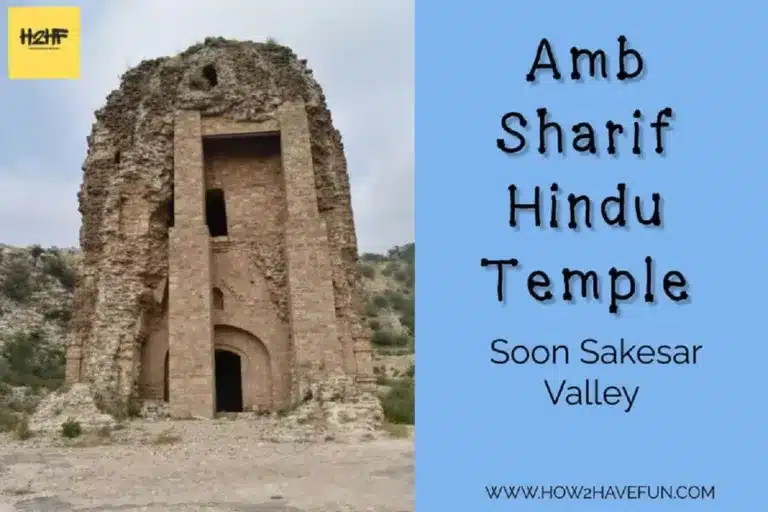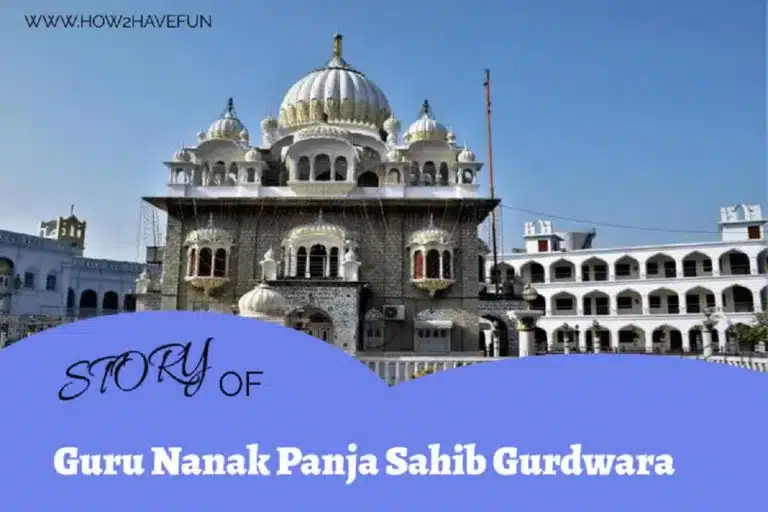The Sikh border post ‘Sangini Fort’ Kallar Syedan Pakistan
Sangini Fort of Sui Cheemian village, Kallar Syedan is more of a border post meant for the rulers of Kashmir (in the 1800s) to exert control over their borderlands. It was also meant to protect local Sikh & Hindu communities, their lands, and also to secure the GT road to the Poonch link.
The word Sangini is used for Hindu women and it means ‘life partner’, from the Punjabi word ‘sangi’ that means partner.
Sangini Fort is also close to Gujar Khan city right on the Grand Trunk road.
Sangini Fort map, its location, and pictures are all posted below for your reference.

By the early 1800s, the Mughal emperor Akbar II, was already too weak to exert any influence over his inherited territory. Sikhs’ had taken over Punjab in 1799 and that included the Kallar Syedan area where the fort is located.

Gulab Singh Dogra, a Hindu governor of the Ranjit Singh era (1801-39) of the Muree region most likely had this fort re-constructed in 1810 to keep the outlier poor Muslim ‘Dhok’, under check. ‘Dhok’ were the villages around the affluent town centers where poor Muslim artisans and farmworkers lived.

There is hearsay evidence of an earlier Mughal fort at the same site. Sangini fort was built by the Sikh to protect the privileged class of Sikhs & Hindus owning agricultural lands in the area i.e. Choa Khalsa, Kallar Syedan.

During the Sikh period, Punjab was 3% Sikh, 75% Muslim, and 22% Hindu, but Muslims were the outcasts.
Giving too much power to Gulab Singh Dogra in order to keep his secular credentials intact was a bad move by Ranjit Singh. After the Sikh loss in Anglo-Sikh War in 1845, Gulab Singh took over Kashmir (1846), with a British nod, and the residents of Kashmir are still paying for this mistake.

We arrived at Sangini fort 90 minutes from Rawalpindi by taking the Kallar Syedan turning at Rawat town ( you can see Rawat fort ), on the GT road. The total distance of Sangini Fort from Islamabad is 62 Kms. The last 15 minutes of the drive is through the ‘Dhok’ villages that are still frozen in time. There were lots of picturesque agricultural lands and plenty of perennial streams running through. I nearly drove over a chicken.

Sangini fort is covered from three sides by a shallow gorge with water running through it. The only level side is at its entrance. Its majestic main gate is tucked into one side to prevent raiders ramming through it. I don’t believe the fort could have protected itself from a professional army as the natural protection was too shallow.

People say that the fort lost its importance after the British took over from the Sikh in 1849 and build garrisons in the Potohar region. After the British takeover of Punjab, the fort was relegated to use as a prison camp and later on as the shrine of Sahibzada Abdul Hakeem.

The saint Abdul Hakeem was from an order that originated in Iraqi. His disciples say that the saint had been worshipping at this fort site before 1800 when the Sikh sent him packing to a nearby village. After the fort was abandoned by the Sikh, the disciples built a shrine inside the courtyard. I guess Pirs’ has a knack for booking prime real-estate and Sikh wouldn’t have any of it.

At one corner of the fort, the courtyard is a hole in the floor from which besieged soldiers would lower water buckets directly into streams below without having to venture outside.

The streams down below are the perfect spot for swimming and cooling off as no sunlight reaches the gorge floor.

The thing I loved the most about the fort was the excellent tile and glasswork of the artisans’ that renovated the shrine. The fort is in quite a good shape considering it is 200 years old. Even the sentry posts at the gates are still functional.

The fort had five spires that had been sealed off to act as sentry towers for the prisoners in the courtyard below.

The present-day keeper of the shrine has one room renovated for himself and was living the dream there — fresh air, prime land, lots of water, free money, and peace all around.
I would recommend Sangini Fort for anyone interested in Punjabi and Kashmiri heritage to visit the frontier of their rule. You will also enjoy this fort Pharwala fort, Mangla and Ramkot fort, Rohtas Fort, and Malot fort.
Do enjoy the video of this fort.
PostScript.
Sangini is a famous name in India with Sangini sarees, Sangini chemicals, sangini swaraj, sangini group, sangini vedanta, sangini dermatology, dr sangini, sangini beauty, sangini dance all originated in this part of the world, i.e. Pakistani Punjab.
Do enjoy the video of this fort.








This fort was constructed by moughals who had a alliance with the Ghakhar rulers of this regoin pohtowar, the fort was used as prison
Thanks for the info. Do share and subscribe
Visited sangni fort to look for a grave outside or nearby of a prisoner freedom fighter of rangit singh era Mohammed Khan tareen of hazara haripur.Mohammed Khan tareen faught 5 battles with sikhs, killing commanders and a French.He was invited for dialogue by rangit singh and dewan chand assured him .but he was taken prisoner and letter poisoned in 1825.